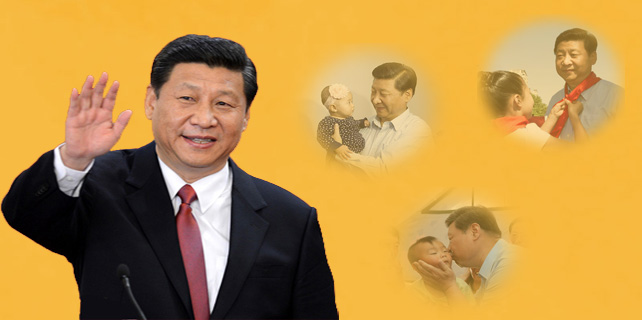China's yuan strengthens to 6-month high against US dollar
BEIJING - The Chinese currency continued to strengthen Thursday, hitting its strongest level against the US dollar in more than six months, following news that the country was mulling a new yuan pricing formula to enhance stability.
The central parity rate of the yuan strengthened 0.8 percent to 6.809 against the greenback Thursday, the strongest level since Nov 10, according to China Foreign Exchange Trade System (CFETS).
This came following a slight lift Wednesday, the first trading day after CFETS announced plans to change the formula for the yuan-dollar central parity rate.
Under China's market-based, managed floating exchange rate system, the yuan can rise or fall by 2 percent against the US dollar from the central parity rate each trading day. The central parity rate is a weighted average of quotes from dealer banks, and follows a formula based on the previous day's closing rate and changes in a basket of selected currencies.
The new formula will allow dealers to incorporate a "counter cyclical factor" into the existing formula to "appropriately hedge against the pro-cyclical fluctuation in market sentiment and alleviate the potential for herd behavior in the forex market."
China's forex market is easily influenced by irrational expectations and spurred by inertia, due to a certain level of "pro-cyclicality," which distorts market demand and supply, and magnifies the risk of exchange rate overcorrection, the CFETS said in a statement.
The CFETS did not give further details about when and how the "counter cyclical factor" will be used.
Analysts said the move was part of a broader effort to ensure market stability.
UBS economist Wang Tao expects the yuan to not move beyond 7 against the dollar by the end of 2017 and to remain relatively stable in 2018.
The central parity rate of the yuan strengthened 0.8 percent to 6.809 against the greenback Thursday, the strongest level since Nov 10, according to China Foreign Exchange Trade System (CFETS).
This came following a slight lift Wednesday, the first trading day after CFETS announced plans to change the formula for the yuan-dollar central parity rate.
Under China's market-based, managed floating exchange rate system, the yuan can rise or fall by 2 percent against the US dollar from the central parity rate each trading day. The central parity rate is a weighted average of quotes from dealer banks, and follows a formula based on the previous day's closing rate and changes in a basket of selected currencies.
The new formula will allow dealers to incorporate a "counter cyclical factor" into the existing formula to "appropriately hedge against the pro-cyclical fluctuation in market sentiment and alleviate the potential for herd behavior in the forex market."
China's forex market is easily influenced by irrational expectations and spurred by inertia, due to a certain level of "pro-cyclicality," which distorts market demand and supply, and magnifies the risk of exchange rate overcorrection, the CFETS said in a statement.
The CFETS did not give further details about when and how the "counter cyclical factor" will be used.
Analysts said the move was part of a broader effort to ensure market stability.
UBS economist Wang Tao expects the yuan to not move beyond 7 against the dollar by the end of 2017 and to remain relatively stable in 2018.
Related Stories
- Dollar and Chinese currency: Mysteries revealed
- Chinese currency gains importance in Latin America: Experts
- Chinese currency renminbi will become more important for Australia's economy: ACBC chief
- Australian securities can be held in Chinese currency
- No basis seen for long-term drop in Chinese currency
















